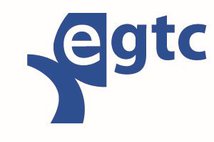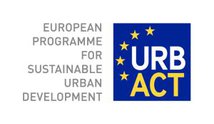"EGTC" Project - Expertising governance for Transfrontier Conurbations
Led by MOT between October 2008 and May 2010 and co-financed by the European URBACT programme, the EGTC project worked on the promotion of innovative governance tools in a panel of cross-border agglomerations. Whereas some cross-border conurbations are quite in advance in the governance process, other ones, especially from the new Member States, need good practices as model, to be adapted to their own context.
Partners
- MOT as lead-partner
- Basel for the Trinational Eurodistrict Basel (F/D/CH)
- the Urban Community of Strasbourg for the Eurodistrict of Strasbourg-Ortenau (D/F)
- Slubice for the agglomeration Frankfurt (Oder)-Slubice (D/PL)
- Lille Metropole for the Eurometropole Lille-Kortrijk-Tournai (F/B)
- Esztergom for the Euroregion Ister-Granum (HU/SVK)
- Chaves for the Eurocidade Chaves-Verin (S/PT)
Objectives
The “EGTC” project aimed to enable stakeholders of urban development in cross-border conurbations to exchange on governance methods regarding any kind of projects, strategies (from observation, urban planning, operational projects to cross-border integrated urban strategies), different legal tools (cross-border convention, common structures, public and private partnerships…), and to identify concrete results, success and failure, so as to improve cross-border cooperation (institutionally, legally, financially…).
The European grouping of territorial cooperation (EGTC), the new European instrument, is the legal tool allowing multi-level governance including national authorities when necessary. The project aimed to study how it could become a European tool of reference to support governance of cross-border conurbations.
The leaflet of the project.
Results
After two years of work on the governance of cross-border conurbations in Europe, the final conference of the "EGTC" URBACT project held in Esztergom, Hungary, on 6 and 7 May allowed the seven partners in the project to present the results of their discussions.
- Organising internal governance
The first project seminar, held in Chaves in March 2009, focused on the political, technical and financial organisation of cross-border conurbations and highlighted the following elements:
- A strong political commitment and the establishment of a sustained link between the political and the technical levels are essential to the organisation of a sustainable cross-border governance.
- The choice of legal form for the governance structure may vary depending on the political impetus, the size of the local authorities and the scale of the projects: there is no single model.
- It is not enough to create such a structure: the difficult part is to get the instrument to work around a global strategy and ambitious, structuring projects that incite local representatives to join as members.
During the project each partner drew up a Local Action Plan, in partnership with its local support group, aimed at improving the organisation of its own cross-border governance.
Further information on the first seminar in Chaves.
- A sizeable challenge: involving civil society
At the second seminar in Tournai in February 2010, the discussions underlined the importance of associating the territory’s “vibrant forces” (private sector, stakeholder organisations, residents, etc.), an involvement which was even defined as a precondition for the project’s success. Many examples were cited, from the involvement of residents in the projects (sports and leisure fixtures, cross-border newspapers and TV stations, web forums, etc.) to initiatives formally associating civil society in public policies as such as the Forum of the Eurométropole Lille-Kortrijk-Tournai or the civil parliament of the EGTC of the Ister-Granum Euroregion.
Further information on the second seminar in Tournai.
- National and European recommendations
Another need voiced by local stakeholders is to benefit from strong support at the national and European levels. The partners drew up a European Action Plan comprising numerous recommendations along these lines, from the idea of setting up a European commissioner for cross-border cooperation to launching a debate on the status of the personnel working for cross-border structures.
Further information on the final conference.



